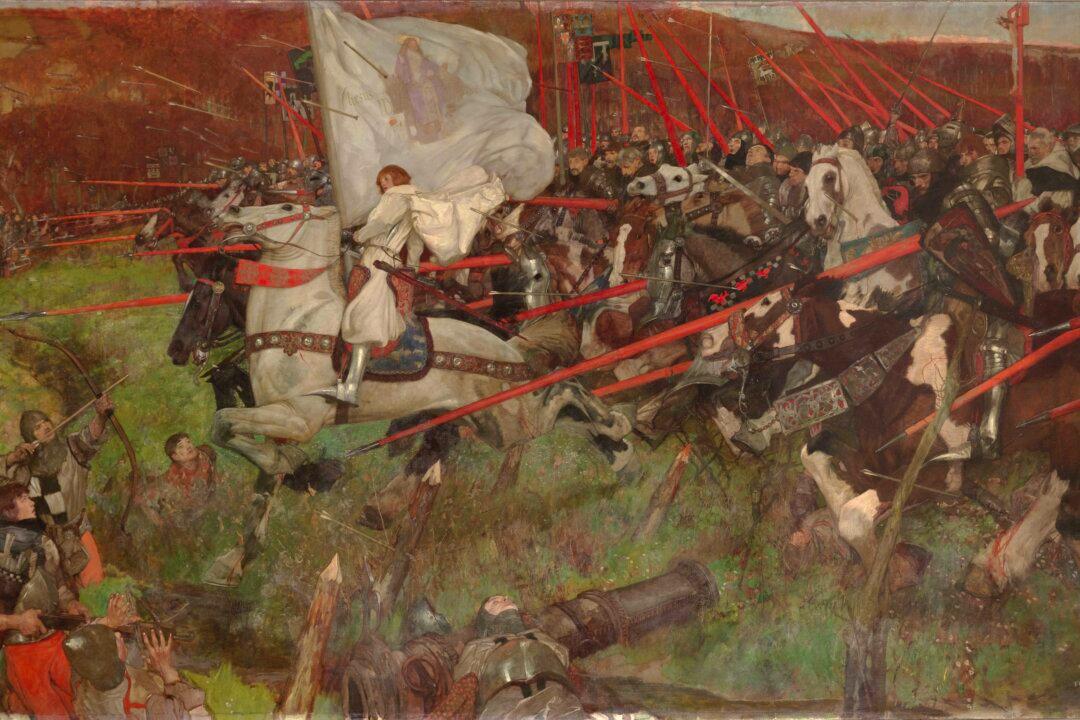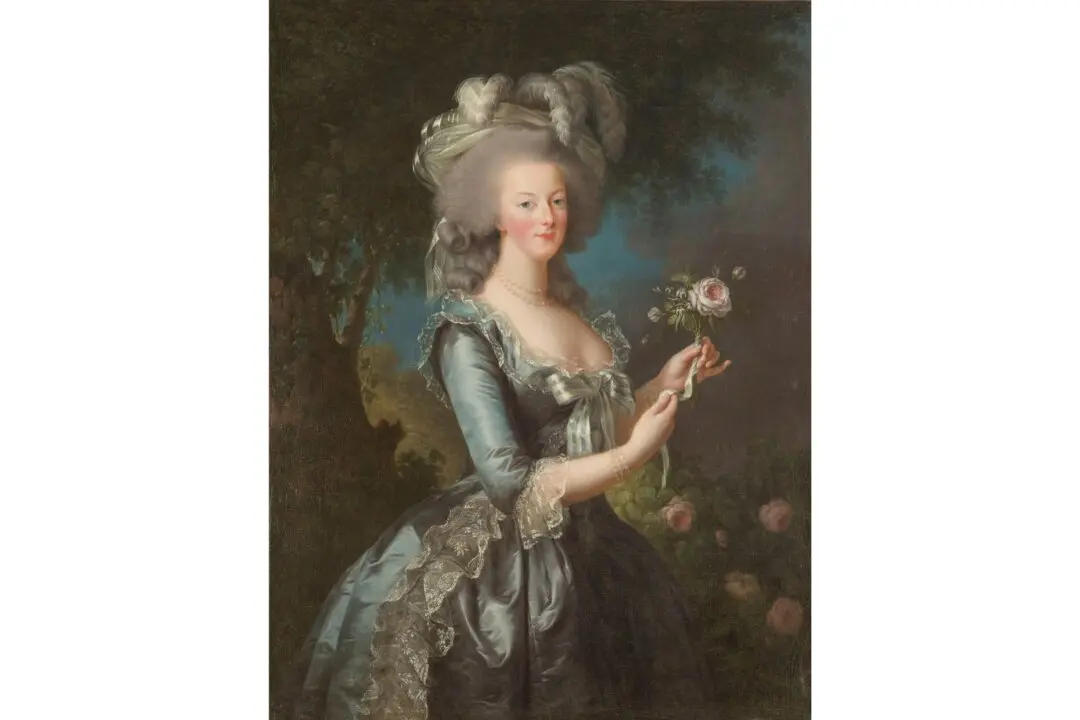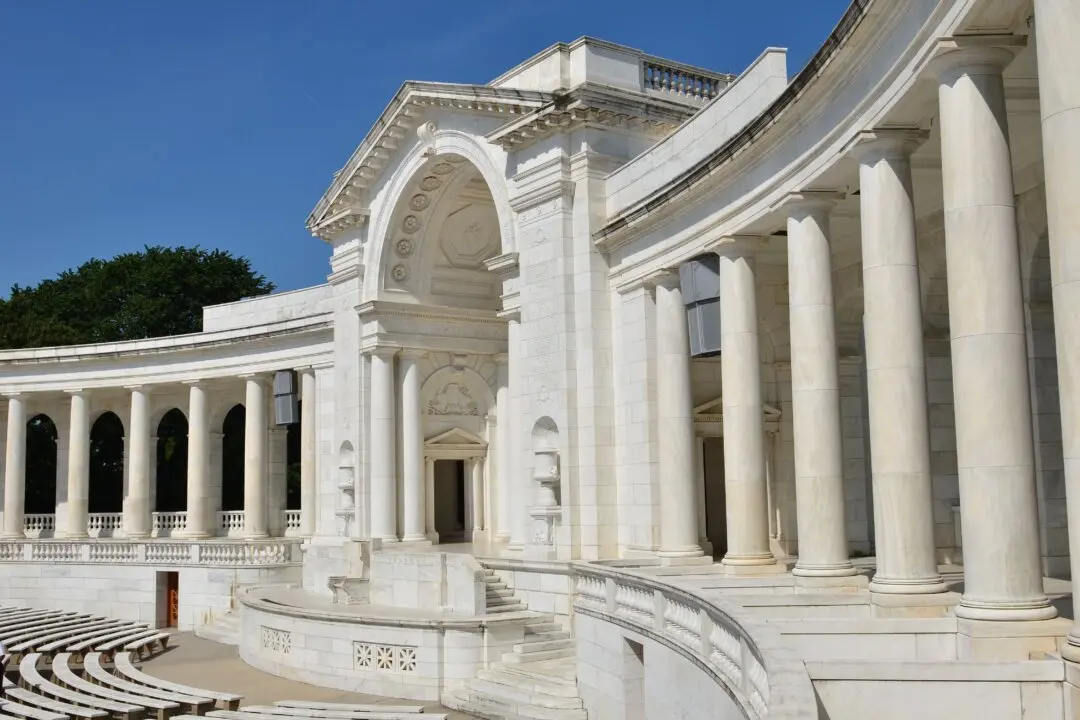Skilled realist painters use their brushes to guide us to the heavens and virtuous conduct. They can also take us through myriad human experiences, including bringing home the harsh realities of battle. British painter Frank Craig did just that in “The Maid,” where he rendered Joan of Arc, the Maid of Orléans, faithfully leading the French cavalry into battle.
Craig (1874–1918) used the red lances to direct the viewer’s gaze to Joan and then to the enemy archers in the distance. Joan is fierce yet poised, riding headlong into enemy lines with her troops. Her white surcoat covers her armor, as she wields a huge white flag of the Virgin Mary, their ultimate protector.






